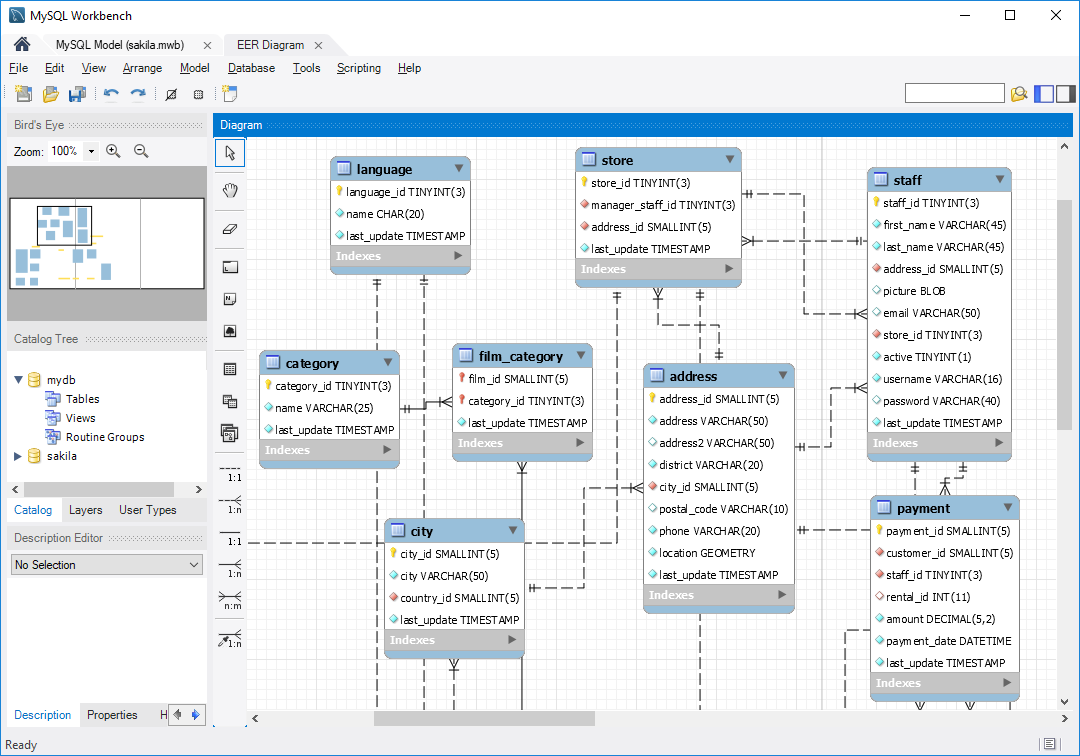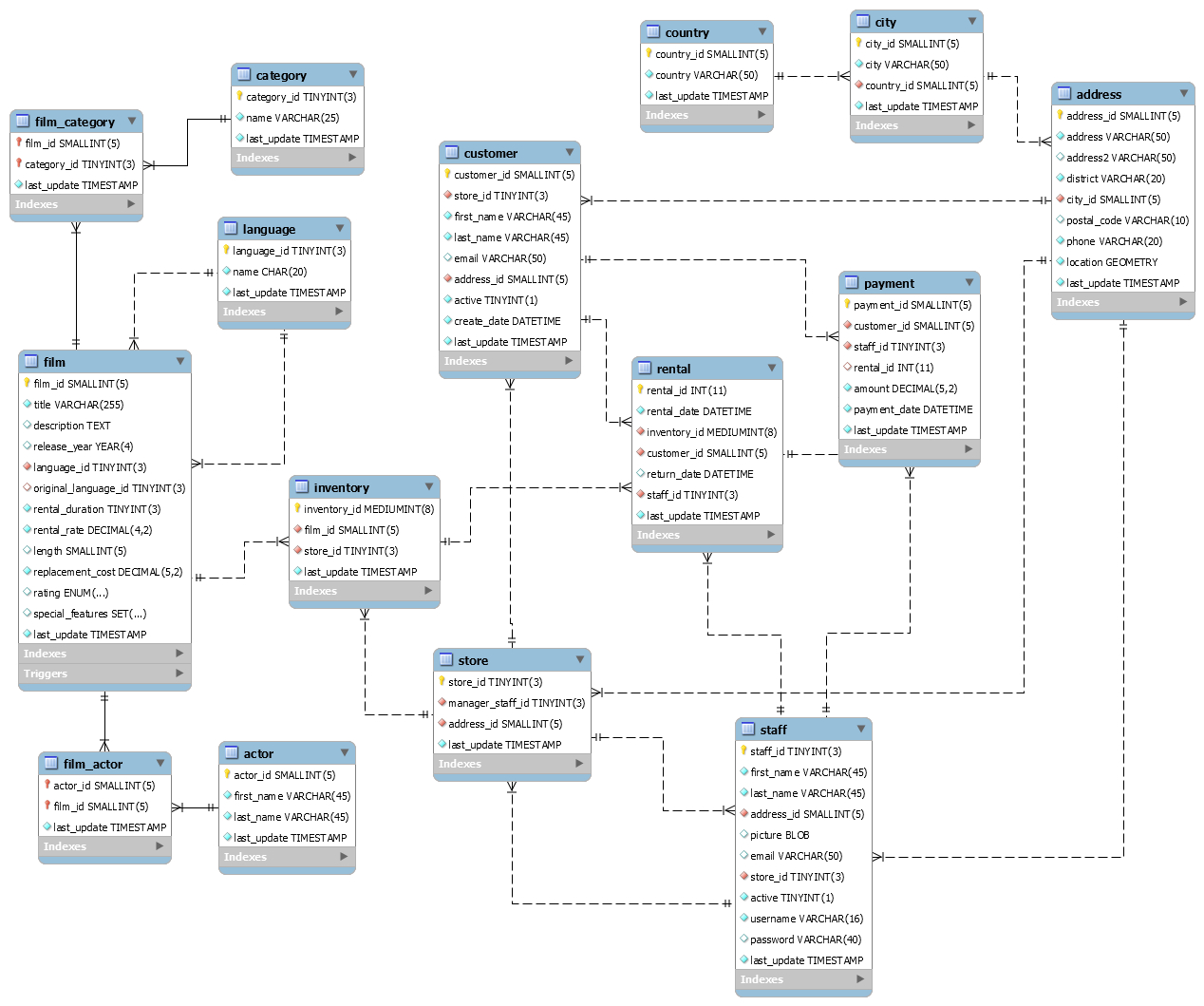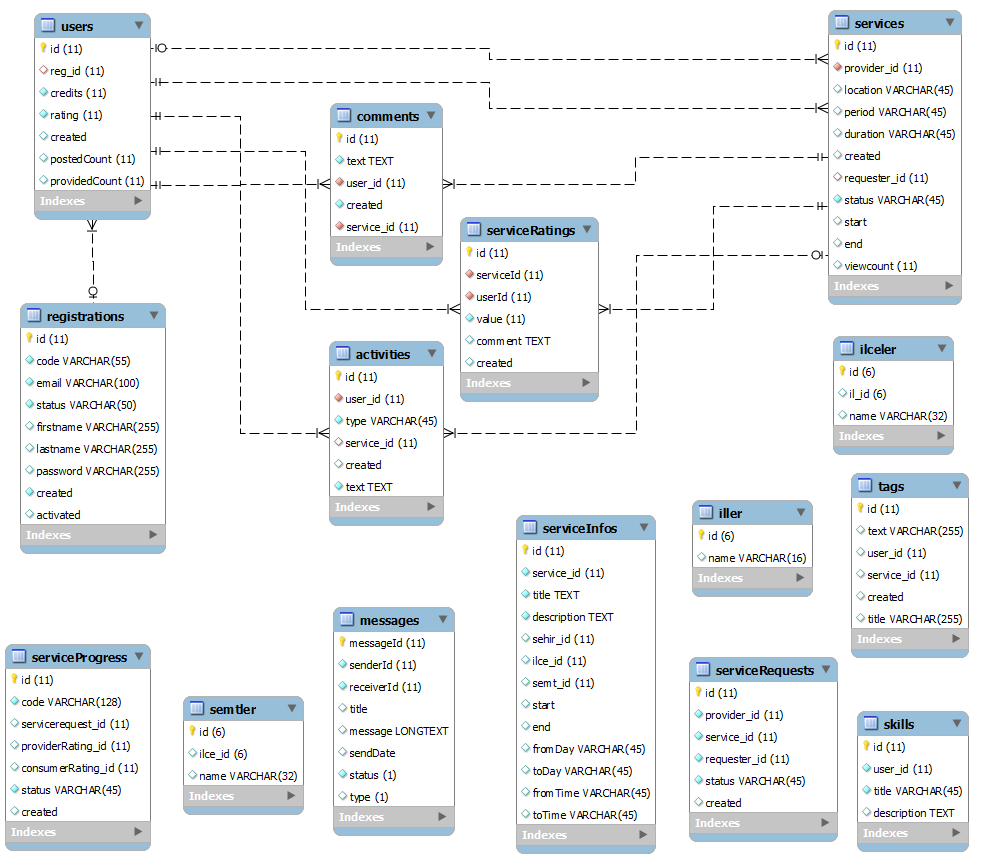

Printing your model directly to your printer, printing it as a PDFįile, or creating a PostScript file. The printing options are enabled only if the EERĭiagrams tab is selected. Set the paper size, orientation, and margins for printing Forįigure 9.29, “The sakila Database EER Diagram”. Section 9.4.1.1, “Forward Engineering Using an SQL Script”.Įxport an EER diagram as a PNG, SVG, PDF, or Postscript file. For more information about these menu items, see Statements necessary to create a new database or alter an existing Section 9.4.2.1, “Reverse Engineering Using a Create Script”. If the script contains data, the data is ignored.įor details about importing a DDL script, see If the script creates a database, a new tab bearing the Schema objects are copied to the default schema, If the script does not contain a CREATE DATABASE For example, this mightīe a file created by issuing the command mysqldump When you save a model, it is saved as a MySQL Workbench file You have made changes to a project and have not saved thoseĬhanges, an asterisk appears in the title bar following the model Model, its name appears in the title bar of the application. To close the currently active MySQL Model or The command to open an existing project is Shortcut to create a new project is Control+N and To display a list of recently opened MWB files, choose Model opens a file dialog box with the default fileĮxtension). Use the File menu to open a project, begin a

Manipulating database models, including these:

MySQL Workbench provides extensive capabilities for creating and Used to build ER diagrams and physical MySQL databases. Model-driven database design is an efficient methodology forĬreating valid and well-performing databases, while providing theįlexibility to respond to evolving data requirements. The data architect, to visualize requirements and resolve design Modeling simplifies database design and maintenance by enabling you, Table of Contents 9.1 Modeling Interface 9.1.1 Model Editor 9.1.2 EER Diagram Editor 9.1.3 Creating Tables 9.1.4 Creating Foreign Key Relationships 9.1.5 Creating Views 9.1.6 Creating Routines and Routine Groups 9.1.7 Creating Layers 9.1.8 Creating Notes 9.1.9 Creating Text Objects 9.1.10 Creating Images 9.2 Additional Modeling Tools 9.2.1 Printing Diagrams 9.2.2 DBDoc Model Reporting 9.2.3 Schema Validation Plugins 9.3 Modeling Tutorials 9.3.1 Creating a Model 9.3.2 Basic Modeling 9.3.3 Importing a Data Definition SQL Script 9.3.4 Using the Default Schema 9.3.5 Documenting the sakila Database 9.4 Forward and Reverse Engineering 9.4.1 Forward Engineering 9.4.2 Reverse Engineering 9.5 Schema Synchronization and Comparison 9.5.1 Database Synchronization 9.5.2 Compare and Report Differences in Catalogs 9.6 Table Templates 9.7 Customizing DBDoc Model Reporting Templates 9.7.1 Supported Template Markers 9.7.2 Creating a Custom Template


 0 kommentar(er)
0 kommentar(er)
